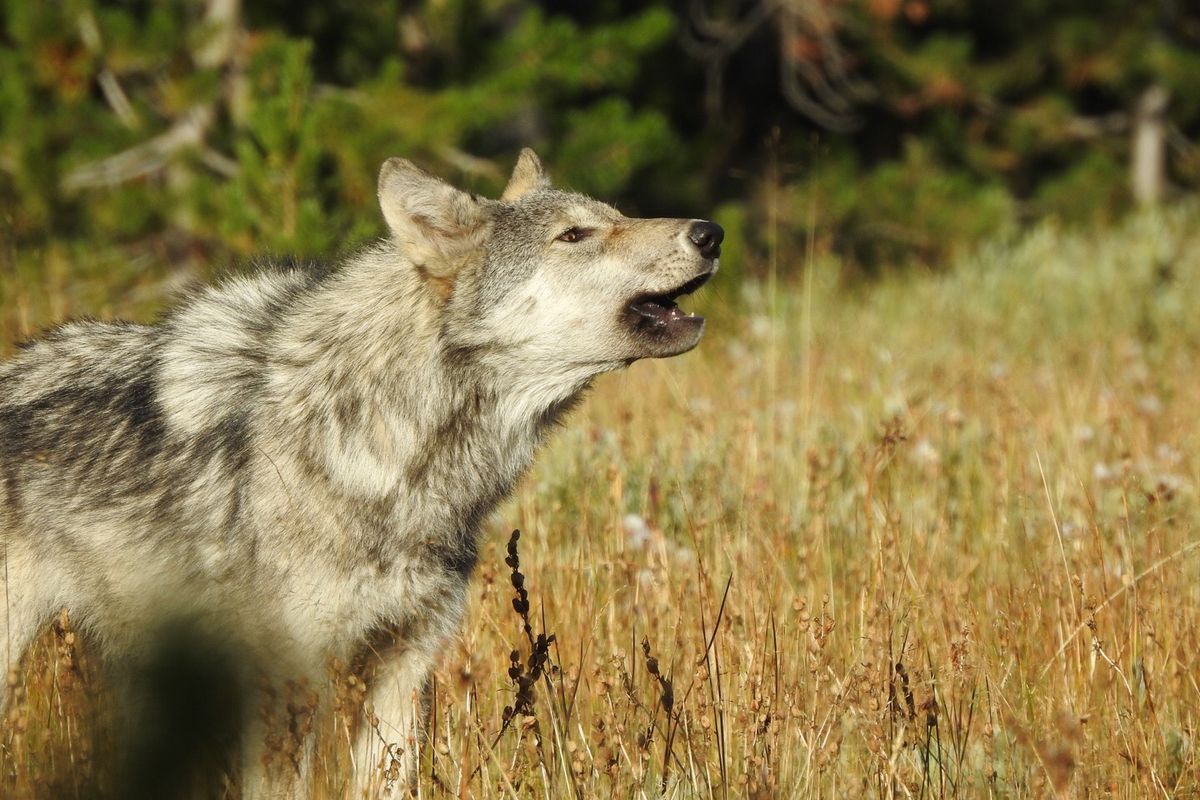Study: Depleted wolf packs unlikely to welcome immigrants

Footloose and unaffiliated wolves don’t often integrate with established packs, even when there is room for them to do so.
That’s the finding from new research examining how hunting wolves in Idaho and Alberta impacted the chances of acceptance for immigrant animals. The results of the study, which surprised the primary authors, raise questions about a long-held tenet of wolf ecology.
“I think it’s highlighting that it’s a more nuanced relationship,” lead author Sarah Bassing said. “It’s not going to be as cut and dry as you harvest wolves and they’re coming back. Period.”
Instead, it seems that even packs reduced through legal hunting are unlikely to accept newcomers. The study was published in Animal Conservation in December and sheds further light on the social and hierarchical nature of wolf packs.
“Harvesting wolves, it’s like digging a hole in the sand,” co-author David Ausband said, summarizing the old view of wolf ecology. “More wolves fill in. As fast as you dig, more wolves will fill in.”
Initially, the two researchers hypothesized that immigration would make up hunting losses.
Finding the opposite to be true surprised them both. Bassing is a Ph.D. candidate at the University of Washington and Ausband is a professor at the University of Idaho.
“(Packs) don’t accept other wolves just so they have a big pack and can kick ass,” Ausband said.
Instead, they’re more selective. When a pack did accept a migrating wolf, it was because there was a breeding position open.
“Group size, recruitment of offspring and the number of occupied territories of wolves also declined in central Idaho after harvest was initiated,” the study states. “Further supporting our findings that immigration did not buffer groups from the effects of harvest.”
Bassing and Ausband hypothesize this reluctance to integrate new members is due to the tight and hierarchical familial bonds in wolf packs. Joining a new pack is a risky endeavor for an immigrant wolf due to “potential aggression from resident members,” the study states.
“Packs might not be as accepting of new individuals because harvest is not as disruptive to the social structure as we might have thought,” Bassing added.
That doesn’t mean wolves aren’t good at filling vacant territory. They are.
Able to travel hundreds of miles and unafraid of hiking through yards and across roads, if good wolf habitat is open, and connected to other wolf populations, it will be filled. This appears to be what’s happening in Northeast Washington’s Wedge Pack territory near the Canadian border.
If there are wolves in an area, however, even a fractured tottering pack, the immigrant wolves are likely to move on.
The study collected 12,192 genetic samples from 70 rendezvous sites in central Idaho and 1,270 genetic samples from 12 rendezvous sites in southwest Alberta. The samples were collected between 2007 and 2016 and then analyzed. Hunting was allowed in Idaho during several periods throughout the course of the study, a fact for which the researchers accounted.
At the time, the differences between Idaho and Alberta wolf management provided a really “nice natural experiment,” Bassing said. Alberta had, for decades, allowed hunting and trapping of wolves. Meanwhile, at that time wolves in Idaho were still protected under the Endangered Species Act.
Collecting those sample required weeks deep in the Idaho and Canadian backcountry hiking to rendezvous sites and collecting hundreds of samples of wolf poop. Rendezvous sites are where packs establish a den for wolf pups between mid-March and mid-June.
Once at the site, researchers would howl, hoping to hear responses from pups and adults. That allowed them to estimate how many animals were in the pack. They spent hours scouring the ground, collecting as much wolf scat as possible. Analyzed DNA samples from the scat gave them the number of wolves in the pack and who was, or was not, coming and going.
Bassing, who was at the time a field technician, said it was some of the most enjoyable field work she’s done.
“Every once in a while we would get some wolf pups to howl back at us, which is the best feeling ever,” she said. “That made weeks of toil feel so cool.”
Although the study challenges the long held understanding of how wolf immigration works, it isn’t necessarily an indictment of previous research, Ausband said. In part, those studies done decades ago focused heavily on wolves in Canada and Alaska. There, with a larger wolf population, the immigration dynamic may be different.
It’s also an example of how genetic testing, game cameras, artificial intelligence and other technologies are allowing biologists to ask – and answer – specific and detailed questions about animal behavior. Questions that would have been unanswerable just a decade ago.
Research like this is shedding light on how wolves live and adapt to a human-occupied landscape. Traditionally, wolf research has focused on packs living in remote wilderness areas – Canada, Alaska and Yellowstone, for instance.
But as wolves, grizzly bears and mountain lions all return to the American West, they’re coming into regular contact with humans, and all our conveniences.
Which raises all sorts of interesting questions.
Clarification: Wolf hunting did occur several times during the study period a fact that was not made clear in the original version of this article.